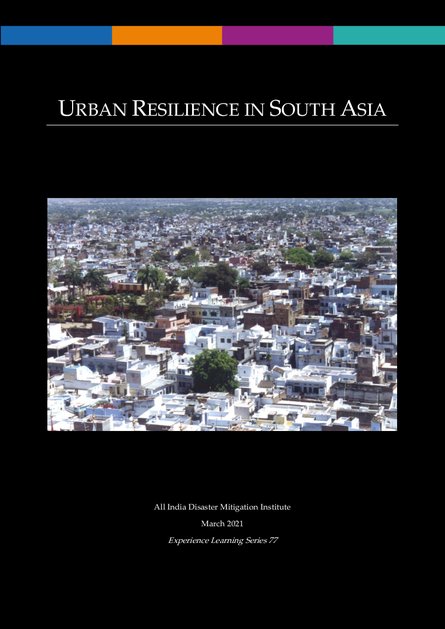
Rapid urbanization has emerged as an undeniable global trend. Ever since 2008, more people in the world, live in urban areas than in the countryside. In 2014 alone, 54% of the world's population resided in urban areas. This puts an extraordinary level of pressure on urban centres which account for only 2.8% of the world's land area. All these facts point to the distending of urban infrastructure and services beyond their carrying capacity. This is particularly true of Asia, where by 2030, 55% of the continent's entire population is expected to live in its urban centres. Moreover, over 70% of the region's GDP is generated from its cities.
The cities of the region are also exposed to multiple hazards such as earthquakes, cyclones, storm surges, droughts, floods and fires. In order to preserve the prosperity generated by these cities, it is important to evolve and adopt lasting urban resilience measures in the Asia Pacific region. This publication is titled “Urban Resilience in South Asia”.
Some of the important themes covered in this issue include, the role of risk assessments in building capacity of city governments, women leadership for urban resilience, financing resilience to climate risks in cities, addressing displacement and social dimensions in disaster resilient city planning in Asia. All these themes highlight the imperative of pursuing urban resilience in Asia Pacific region for long term safety, security and prosperity of the region.
Resource collections
- ADRRN Knowledge Hub
- Climate emergency
- Evaluating humanitarian action
- Monitoring of humanitarian action
- UN Habitat - Urban Response Collection
- Urban Response - Urban Crisis Preparedness and Risk Reduction
- Urban Response Collection - Community Engagement and Social Cohesion
- Urban Response Collection - Economic Recovery
- Urban Response Collection - Environment and Climate Change
- Urban Response Collection - Housing, Land and Property
- Urban Response Collection - Urban Crisis Response, Recovery and Reconstruction
- Urban Response Collection - Urban Resilience